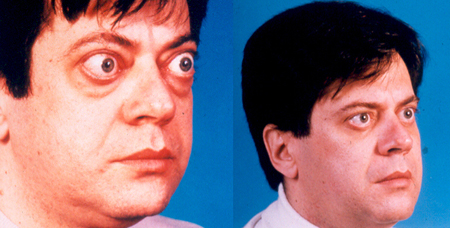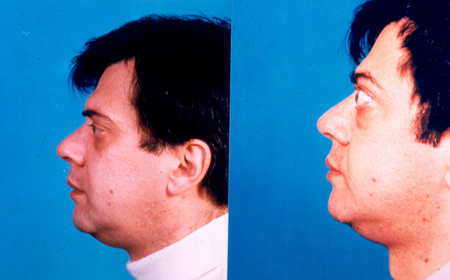Exophthalmos: The aim of this surgery
“Exopthalmos” is the protruding eyeball interiorly out of the orbit ( age socket ). The common cause is the thyroid gland disease, called Graves-basedov Disease.
The fate of patients suffering from EO is not auspicious and their handling requires special effort because even after the restoration of thyroid disease , ” exophthalmos ” persists or even worsens uncontrollably , with serious consequences for the health of the patient.
To treat” exophthalmos” a conservative treatment is proposed firstly. Till today all surgical techniques included enlargement and decompression of the orbit , interfering with bone structures . These interventions are of high surgical severity and exhibit large percentage of dangerous complications . For these reasons the indications for surgical treatment are placed only when threatened the vision of patients , resulting in the majority of them live with their problem .
This led to the need to develop a new surgical technique , the originality of which lies in the fact that while all existing techniques involved in bony orbital structures , the technique intervene in intraorbital fat , the volume of which increases especially in this condition. With this procedure we remove the maximum amount of fat . This technique minimizes the intraoperative and postoperative complications .
Description of the procedure
The procedure is carried out under general anesthesia and it involves the deconpretion of the orbits by removal of the excess orbital fat failing that a surgical treatment is recommended.
The operation is performed under general anesthesia . Our long experience now allows surgeons to intervene into both eyes during the same surgery (when exophthalmos is bilateral) .
The incisions on the upper and lower eyelid are performed as in aesthetic blepharoplasty and normally is invisible . With access to all anatomical layers of the eyelids reveal the intraorbital fat , which projects sharply because the volume is too high, and gradually remove as much as possible . In this way we clear the orbit and create space so the bulb is able to retreat to its normal position. The decline is uniform and permanent, because fat is known that it not recreated.
This proceoline has been performed for the last 25 years with excellent results.
Picture Gallery




Postsurgical
It is normal to have extensive swelling and bruising. These gradually subside over the next 2-3 weeks. The sutures are removed after about one week. Because retro bulbar swelling subsides gradually, the desirable is observed after about 6 months. The use of sunglasses is recommended for the first few days and strenuous exercise should be avoided.
Possible complications
Theoretically hematoma may appear which will require a reoperation.
After a period of about 2-3 months the desired result can be observed.
Strict adherence to guidelines is essential for good results.
Please ask us for everything you seem important.
Postoperative results of operations you can see during your visit to the clinic.
